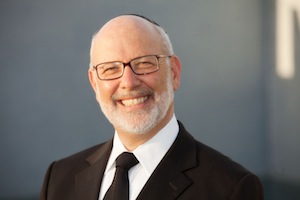Halacha: Responsive to Change or Reactionary Fundamentalism?
Rashi Shemot 21:1
Change and Masorah (Tradition)
When it comes to change, Poskim (renowned Halachik decision-makers) go only so far and no further. They walk the difficult tension between changing social norms and needs, and adherence toMesorah (the tradition of Jewish conduct handed down from Sinai and transmitted orally throughout the ages). On the one hand they have significantly accommodated changing situations throughout the ages. On the other hand they often seem fiercely reactionary! What are some of the principles that govern change in Halacha?
The Three Meanings of “Law”
Part of the confusion stems from three different meanings for the word “law” [1]. Law is sometimes a system of rules that govern the conduct of the members of a society. In other contexts a law is a statement of fact that a given phenomenon always occurs given certain conditions. A third meaning of the word law is a body of divine commandments. The first meaning assumes that laws continuously evolve and change to meet changing social needs and norms. The laws that the second meaning implies never change, that is why they are laws rather than opinions! What about the third meaning? Do divine laws change the way human ones do; or are they immutable like natural laws are?
This is one of the major religious conundrums of our time. On the one hand all religions believe that their laws are divine. If G-d gave them to us who are we to change them? On the other hand how do we keep our religions current and relevant if the laws never change to accommodate changing circumstances?
Torah Law: Legislated or Discovered?
Our heritage of Divine Law is unique, and exquisitely beautiful. Torah Law is not Law in the sense of regulations created by a society or its legislators. Torah Law is the revelation of the laws of moral and spiritual causality in the same way as natural and scientific laws are the laws of physical or scientific causality. The difference is that natural and scientific laws are garnered from observation and experiment, whereas the Creator handed Torah Law to us. Torah laws give us an awareness of the physical, material, emotional, spiritual and cosmic outcomes of our thoughts, words and actions [2]. The justice of the Torah is not merely to be seen as harsh justice being meted out by an unforgiving G-d. It is the inevitable consequence of the choices we make. As such they are by definition no more changeable than are the laws of nature. The pain we experience when we burn ourselves or fall from a height are not punishments, but predictable consequences of specific actions. The spiritual damage our choices can inflict on our souls and the impact of that on our lives, is similarly an inevitable consequence of the choices we make. That is the law of the Universe [3]. That is the law of the Torah.
Navigating Divine Law for Human Frailty
But let’s go a step further. Gravity is an immutable law of physics. This however does not mean that man is unable to defy gravity by understanding its Math and propel himself to outer space; he can. Similarly, G-d gave us the Math of Torah Law and taught us how to use it. It is this power of Talmudic Law passed down through oral tradition, that gives our Poskim the capacity to navigate the Laws of the Universe, the Laws of the Torah. Using their knowledge and their skill they find solutions to human dilemmas and challenges caused by the misalignment of the reality of peoples’ lives, with the ideals of Torah Law. The dilemma is the She’eila; the solution is the Pesak.
Aligning Permanence with Innovation and Responsiveness
In the Torah we have symbols for both the immutable universal laws and for Talmudic maneuverability. The Beit Hamikdash (Temple) is the symbol of never-changing spiritual principle. The Sanhedrin (the highest court of Torah judges) symbolizes the G-d given authority to navigate the Law without adulterating it to find real solution to practical dilemmas. Our Parsha, Mishpatim,opens with a most elegant alignment of those symbols. “Why,” asks Rashi, “does Mishpatim, the Parsha of Law, follow directly after the section dealing with the alter and the Temple? To teach us that the Sanhedrin should only meat in a space physically aligned with the Temple”. This physical alignment reflects intellectual and spiritual alignment. The task of the Sanhedrin is to fuse its ever-changing innovativeness with the immutable permanence of the temple and all of the natural law of moral and spiritual causality that it represents.
This is the challenge we face each day: as we navigate our lives, we are to stay anchored in unchanging principles of belief, morality and Halacha while at the same time our lives are relevant, contributive and impactful.
[1] The New Oxford American Dictionary, under the entry “law”.
[2] Nefesh Hachaim; 1: 12-14
[3] The source of our wisdom regarding these laws is the written Torah and our oral Masorah, (knowledge handed down through the generations). It is so interesting that so many of these same laws of causality have been discovered through thousands of years of observation and research in India and the Far East.








